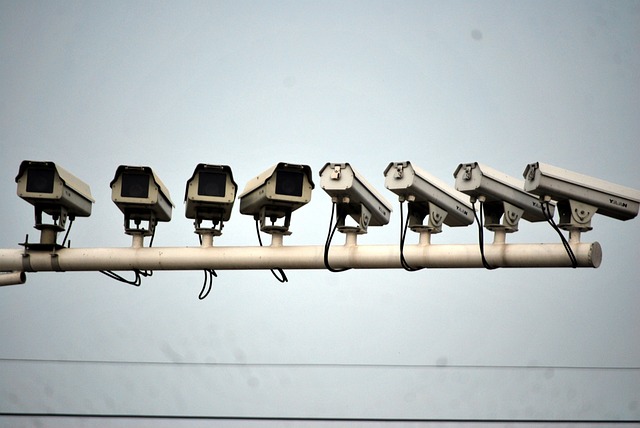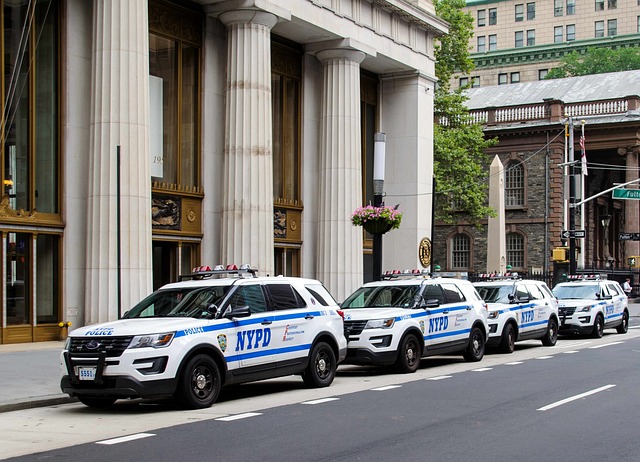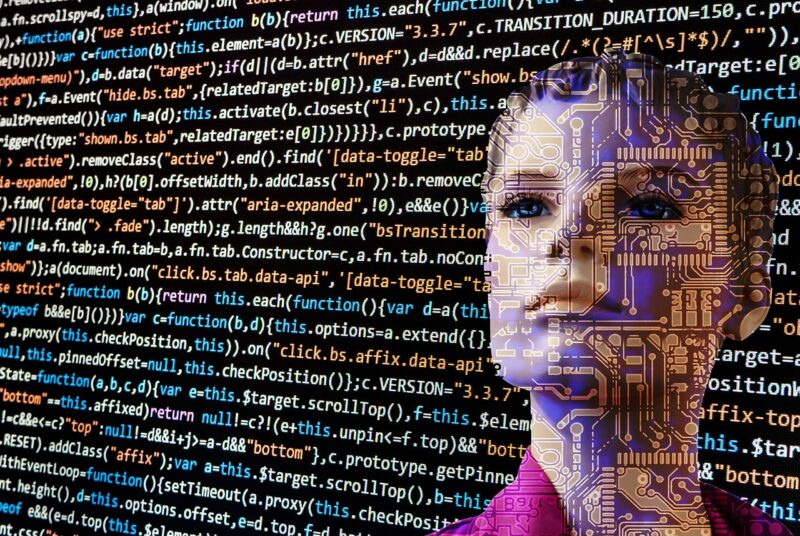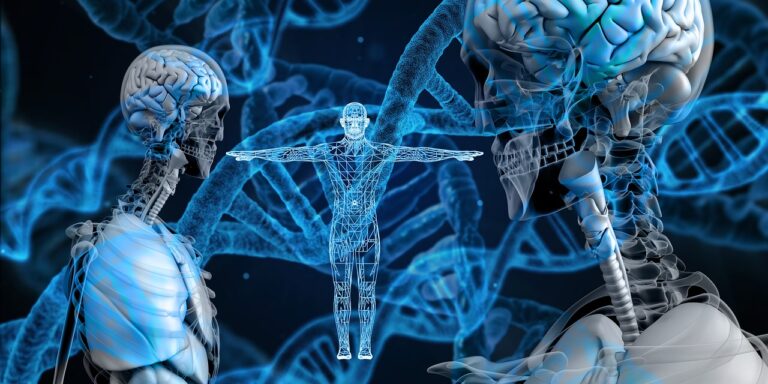Amazing Artificial Intelligence Camera Systems Crack Crimes
Technological advancements have shaped the ever-evolving landscape of law enforcement, enhancing investigative techniques and crime-solving capabilities. A prominent example of such innovation is the use of artificial intelligence camera systems. These systems leverage sophisticated algorithms and machine learning to transform the way crime scenes are investigated, offering law enforcement agencies invaluable tools to solve complex mysteries and deliver justice.
Technology has transformed law enforcement in the past few decades, giving agencies access to various tools and resources to fight crime effectively. Some of these advancements include DNA analysis and digital forensics, which have opened new opportunities and difficulties for the field. However, one of the most remarkable innovations in recent years is the combination of artificial intelligence (AI) and camera systems.
These camera systems combine sophisticated hardware and intelligent software that can analyze huge amounts of video and image data with high accuracy and efficiency. These systems do more than just surveillance, they provide investigators with advanced features such as object recognition, facial detection, and behavioral analysis. By using AI, law enforcement agencies can sort through tons of data, find crucial evidence, and discover hidden patterns that might have been missed otherwise.
This article will explore the diverse and crucial role of AI camera systems in crime scene investigations. We will discuss how these cutting-edge technologies are changing the methods of gathering, analyzing, and interpreting evidence, revealing the complex mechanisms of criminal activities. We will also look at the various advantages and drawbacks of using AI camera systems in law enforcement, from improved video analysis to predictive analytics.
Understanding Artificial Intelligence Camera Systems

AI camera systems are a game-changer for crime scene investigations. These systems use artificial intelligence, a field of computer science that creates machines that can do things that normally need human intelligence. AI camera systems can process video and images with amazing accuracy and speed, thanks to powerful algorithms and machine learning methods.
Unlike traditional surveillance cameras that only record events and depend on human operators to review the footage, AI camera systems can process and understand visual data in real-time. They can automatically identify and follow objects of interest, match faces, and even detect behavioral patterns, without any human input.
Artificial Intelligence camera systems become more effective as they learn and adapt over time. They use machine learning to train on large datasets with different objects, faces, and activities. By analyzing more data, they improve their algorithms, making them more accurate and reliable.
The Impact of AI Camera Systems on Crime Scene Investigations
Crime scene investigations have become more efficient and effective with the use of artificial intelligence (AI) camera systems. These systems can enhance various aspects of the investigative process, such as collecting evidence, identifying suspects, and analyzing behavior. Here are some ways that AI camera systems are transforming how law enforcement agencies conduct crime scene investigations.
Enhanced Video Analysis:
Artificial Intelligence camera systems can greatly improve crime scene investigations with their video analysis capabilities. Unlike conventional methods that rely on human investigators to review hours of surveillance footage manually, AI camera systems can process video footage quickly and efficiently, either in real time or after the event. This way, investigators can save time and effort and concentrate on important information.
By leveraging advanced algorithms and machine learning techniques, Artificial Intelligence camera systems can detect and track objects, faces, and activities with remarkable accuracy. This enables investigators to quickly identify potential evidence, such as weapons, vehicles, or suspicious items, and prioritize their efforts accordingly. Moreover, AI camera systems can detect subtle cues and anomalies in video footage that may not be immediately apparent to the human eye, providing valuable insights into the sequence of events at a crime scene.
Object Recognition:
AI camera systems excel at object recognition, allowing them to automatically identify and classify objects captured in video footage. This capability is particularly useful in crime scene investigations, where identifying relevant evidence is paramount. For example, AI camera systems can distinguish between different types of weapons or vehicles, helping investigators establish links between crime scenes and suspects.
Facial Recognition:
Facial recognition technology integrated into AI camera systems enables investigators to identify suspects or persons of interest by matching faces captured in video footage against databases of known individuals. This capability has proven invaluable in tracking the movements and interactions of suspects across multiple locations, providing law enforcement agencies with valuable leads and evidence.
Behavioral Analysis:
Another key advantage of AI camera systems is their ability to analyze patterns of behavior captured in video footage. By examining factors such as movement, gestures, and interactions, these systems can detect suspicious or unusual behavior that may warrant further investigation. For example, AI camera systems can identify individuals loitering in restricted areas or exhibiting nervous behavior, helping investigators identify potential suspects or witnesses.
Integrating AI Camera Systems into Investigative Processes
Artificial intelligence (AI) camera systems have become an integral part of law enforcement investigations. They provide various features and functions that can improve and expedite crime scene analysis. Next, we will examine how law enforcement agencies use AI camera systems to support their investigative work.
Data Integration:
One of the key benefits of AI camera systems is their ability to integrate seamlessly with other data sources, such as criminal databases, geographic information systems (GIS), and social media platforms. This integration allows investigators to access a wealth of information that can provide valuable context and insights into the circumstances surrounding a crime.
For example, AI camera systems can help investigators by matching facial recognition data with criminal databases, which can quickly identify suspects or persons of interest. Likewise, geographic information systems can help investigators by mapping surveillance footage onto crime hotspots or areas with known criminal activity, which can reveal patterns and trends that may be related to their case.
Predictive Analytics:
By using predictive analytics, AI camera systems can forecast possible criminal activity based on past data and patterns. These systems can help law enforcement agencies use their resources more efficiently and stop crimes before they happen, by analyzing previous incidents and finding common trends or risk factors.
AI camera systems can use surveillance footage to analyze behavioral patterns and detect areas where criminal activity is more likely to occur, such as places where people often loiter or act suspiciously. Law enforcement agencies can then send patrols or surveillance equipment to these areas in advance, preventing crime and protecting public safety.
Evidence Documentation of A.I. Camera Systems
AI camera systems are essential for recording and preserving evidence from crime scenes. They can add timestamps and notes to video footage automatically, creating a clear and accurate timeline of events. This can serve as valid evidence in legal trials.
By accurately documenting the chain of custody for evidence, AI camera systems help to preserve its integrity and reliability, strengthening the prosecution’s case against the perpetrators. Additionally, the timestamped footage can serve as a valuable reference for investigators, allowing them to revisit critical moments in the investigation and uncover new leads or insights.

Challenges and Considerations
While artificial intelligence (AI) camera systems offer tremendous potential to revolutionize crime scene investigations, they also pose several challenges and considerations that must be addressed by law enforcement agencies. From ethical implications to security concerns, it is essential to carefully evaluate the risks and limitations associated with the deployment of these technologies.
Ethical Implications:
A major ethical concern about AI camera systems is how they affect privacy rights and data protection. These systems can collect and process huge amounts of personal data, such as pictures of people and what they do. This could violate the privacy rights of innocent people who might be accidentally recorded by the cameras.
Facial recognition technology poses ethical challenges beyond privacy issues, especially in terms of its accuracy and fairness. Research has revealed that facial recognition algorithms may be more prone to errors when recognizing people from specific demographic groups, raising the risk of algorithmic bias and racial profiling.
To protect the rights of individuals and reduce the risks of privacy violations, law enforcement agencies need to adopt strong privacy policies and measures. These may involve getting the voluntary agreement of individuals before recording their images on camera, keeping the surveillance footage for a short time only, and performing frequent checks to follow the privacy rules.
Security and Reliability:
Secure and reliable Artificial Intelligence camera systems are also a major challenge. These systems use sophisticated algorithms and software that could be hacked or tampered with. If someone breaches the security of AI camera systems, they could access confidential data or alter surveillance videos.
The quality and diversity of the training data that is used to develop AI algorithms affect their reliability. AI camera systems may produce unreliable or inaccurate results if the training data is incomplete or biased. This would compromise the effectiveness of the AI camera system.
Artificial Intelligence camera systems face various challenges that require law enforcement agencies to take cybersecurity measures to protect them from potential threats. These measures may consist of encrypting data transmission, updating software regularly to fix security flaws, and testing and validating AI algorithms thoroughly to verify their dependability and precision.
Regulatory and Legal Frameworks:
AI camera systems pose significant challenges to the regulation and legality of their use. There are no standard rules or guidelines for these systems, so law enforcement agencies have to deal with a complicated set of legal issues by themselves.
AI camera systems pose significant challenges and opportunities for law enforcement agencies. Policymakers need to establish clear and comprehensive rules for their use, taking into account data privacy, algorithmic transparency, and accountability issues. These rules should aim to balance the benefits of AI technology for public safety and security with the protection of individual rights and liberties.
Case Studies and Examples
Real-world examples demonstrate the practical applications and effectiveness of artificial intelligence (AI) camera systems in crime scene investigations. These case studies showcase how law enforcement agencies have leveraged AI technology to enhance their investigative capabilities, solve crimes, and ensure public safety.
- New York City Police Department (NYPD) – Operation Cutting Edge

The NYPD implemented Operation Cutting Edge, a program utilizing AI camera systems to combat illegal gun trafficking and violence in high-crime areas. By strategically deploying surveillance cameras equipped with AI capabilities, the NYPD was able to identify and track suspects involved in illegal gun transactions. The system’s object recognition feature allowed investigators to detect concealed firearms, enabling law enforcement to intercept criminal activity and make arrests. Operation Cutting Edge resulted in a significant decrease in gun-related crimes and contributed to the dismantling of several illegal gun trafficking networks.
- London Metropolitan Police – Facial Recognition Trials
The London Metropolitan Police conducted trials of facial recognition technology integrated into AI camera systems to enhance public safety and prevent crime. During the trials, surveillance cameras equipped with facial recognition capabilities were deployed in crowded areas and major transport hubs to identify persons of interest, including suspects wanted for serious offenses. The system compared live facial images captured by the cameras with a database of known individuals, alerting law enforcement officers to potential matches in real time. The trials led to the identification and apprehension of multiple suspects, including individuals wanted for violent crimes and terrorism-related offenses.
- Los Angeles Police Department (LAPD) – Predictive Policing
The LAPD implemented a predictive policing program utilizing AI camera systems to proactively identify and address emerging crime trends and hotspots. By analyzing patterns of behavior captured in surveillance footage, the AI system was able to predict areas with a high likelihood of criminal activity and deploy resources accordingly. The system’s predictive analytics capabilities enabled law enforcement to prevent crimes before they occurred, deter criminal activity, and improve overall public safety. The LAPD’s predictive policing program resulted in a significant reduction in crime rates and enhanced community trust and collaboration.
- Singapore Police Force – Video Analytics Hub
The Singapore Police Force established a Video Analytics Hub, a centralized platform leveraging AI camera systems to analyze video footage from surveillance cameras deployed across the city-state. The hub utilizes advanced video analytics algorithms to detect and identify suspicious behavior, unauthorized activities, and security threats in real time. The system’s object recognition and behavioral analysis capabilities enable law enforcement to respond swiftly to incidents, coordinate emergency responses, and conduct targeted investigations. The Video Analytics Hub has proven instrumental in enhancing public safety and security, ensuring rapid and effective law enforcement interventions.
These case studies demonstrate the transformative impact of AI camera systems on crime scene investigations and law enforcement operations. By harnessing the power of AI technology, law enforcement agencies can leverage advanced analytics, object recognition, facial recognition, and predictive policing capabilities to enhance situational awareness, detect criminal activity, and protect communities from harm. However, agencies need to balance the benefits of AI camera systems with ethical considerations and privacy safeguards, ensuring that these technologies are used responsibly in accordance with legal and regulatory requirements.
Conclusion
Artificial intelligence (AI) camera systems have been transforming the way crime scenes are investigated and law enforcement operates. This field has many potential areas for future development and innovation, but also some important challenges to overcome to ensure the best use of these technologies.
A possible area of improvement is to fine-tune and optimize AI algorithms to increase the precision and dependability of object recognition, facial recognition, and behavioral analysis features. Ongoing research and development activities will be essential to boost the efficiency of AI camera systems and lower the chance of false positives or mistakes.
The combination of AI camera systems and other new technologies, such as augmented reality (AR) and virtual reality (VR), can also improve the efficiency of crime scene investigations. AR and VR technologies can offer investigators realistic and interactive tools for seeing and examining crime scenes, recreating events, and working with colleagues in real time.
The Internet of Things (IoT) also offers new possibilities for AI camera systems, beyond the usual surveillance cameras. Law enforcement agencies can use data from IoT devices, such as drones, smart cameras, and wearable sensors, to improve their situational awareness and response capabilities. This way, they can prevent crimes more proactively and efficiently.
AI camera systems are becoming more advanced, but law enforcement agencies must also be careful about the ethical, legal, and social issues they raise. These include privacy rights, data protection, algorithmic bias, and transparency. These technologies should be used responsibly and ethically, with respect to these considerations.
Thank you for reading this article and discovering how Artificial Intelligence Camera Systems can help criminal investigations. If you want to learn more, check out the next article about how Virtual Reality is a new tool for Detectives to solve crimes.
Also, don’t forget to visit my other website where you can find detailed reviews on the latest trending products.
Willie McCain




